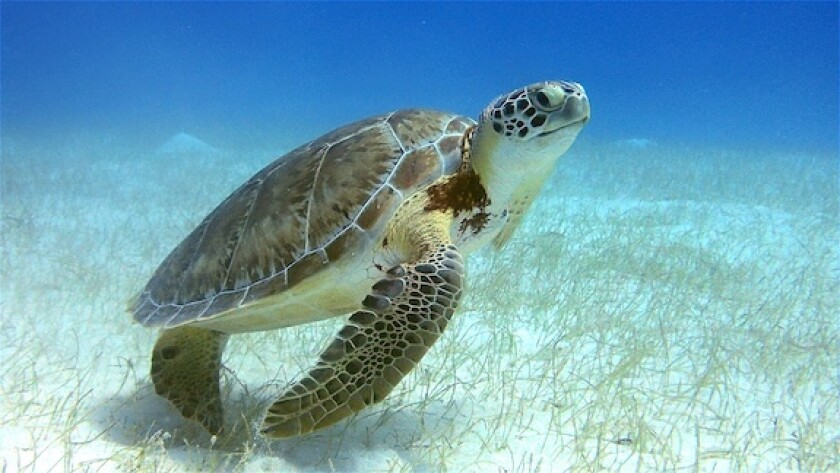As details emerged on the blue bond financing that wraps Belize’s restructuring, reducing the sovereign’s debt by 12% of GDP, some hope that the transaction could inspire similar deals in other debt-distressed nations vulnerable to climate change.
The blue bond will be issued by a subsidiary of The Nature Conservancy (TNC), which will lend the proceeds to the government of Belize to complete a below par buy-back of its only international bond in return for marine conservation commitments. Credit Suisse arranged the bond, which is guaranteed by the US Development Finance Corporation, while Citi was ESG structuring advisor to Belize.
Marisa Drew, chief sustainability officer and head of sustainability strategy, advisory and finance at Credit Suisse, said the deal is an indication of a trend in climate finance.
“One theme coming out of COP26 is the potential for blended finance structures where non-classical actors participate in the same capital stack to unlock value,” said Drew. “Here we have a for-profit financial institution, an NGO, a sovereign entity, and the development finance arm of the US government all participating together.
“This is the special sauce that allowed us to create the deal. It’s a win-win for Belize, because it reduces their debt burden but also helps to conserve their coastline, which can attract more tourism revenues.”
By far the largest deal yet from TNC’s Blue Bonds for Conservation debt swap programme, Belize’s swap certainly piqued the interest of other COP26 participants. Ecuador’s president Guillermo Lasso, for example, revived the debt for conservation swap idea in connection with a pledge to extend the protected area around the Galapagos Islands.
‘20-odd’ candidates
There are certain conditions required for such a deal, however. Belize’s fiscal stress meant its bonds were trading well below par, and TNC effectively captured this discount to channel funds towards nature conservation. But governments with bonds trading at a discount could replicate the model.
“Covid-19 really affected island territories that are very dependent on tourism, so there may be some more candidates for similar deals,” said Drew. “We believe there are some 20-odd countries that could qualify for the TNC debt swap for nature programme, and countries are being vocal about wanting to support conservation, so it becomes a question of marrying that intent with the desire of NGOs to help.”
One sell-side credit analyst called the restructuring a “great deal” that “seized on the fact investors are desperate to prove their ESG chops”.
However, one major EM sovereign bond buyer warned that investors could not be asked to take losses in return to ESG commitments.
“Commercial holders of debt don’t have a mandate to give up their claims in exchange for conservation efforts,” he said. “The debt has to be bought up by someone who does have that mandate — whether it’s TNC or multilaterals.
“So while it’s positive, debt for nature swaps will remain a peripheral subset to the climate finance needs of the emerging world.”
Still, for individual countries the impact could be far from peripheral. Belize had restructured its international bond four times since 2007, and the sell-side analyst said it will be a relief for the country to exit international public bond markets.
“The country does not generate enough dollar revenues to justify a global bond, and previous restructurings had done nothing to tackle the debt stock, so I’m glad to see them break out of that cycle,” she said.
Sovereign debt expert Mitu Gulati wrote in a blog post that Maldives, Costa Rica, Fiji, Barbados and Sri Lanka could be potential beneficiaries of similar deals, noting they had been hit financially by Covid-19 and the drop in tourist revenues, and all had coral reefs in need of protection.
“This deal is crucial because it proves that debt-for-nature swaps can work on this scale,” said Ramzi Issa, managing director of credit structuring at Credit Suisse. “From a political point of view, Belize was previously paying external creditors and now it’s redirecting funding back to its own economy.”
Official sector’s new direction
One point raised by Gulati when weighing up whether Belize’s deal could be replicated was the potential role of the official sector. He noted “enormous enthusiasm” in official sector circles for anything green.
Drew said that the guarantee provided by DFC was a sign of the new direction development banks were taking on sustainability matters.
“There is huge interest from them because policymakers want them to do their part — particularly around natural capital solutions and blue themes,” said Drew. “It’s no longer about the classic lending model, but it’s a question of taking some kind of first loss or providing credit enhancements that can create an opportunity for for-profit investors to put up funding and deliver conservation outcomes.
“Effectively it’s leveraging the credit rating of these entities to help to finance areas that the private sector might struggle to fund in isolation.”
Indeed, when the deal was first publicly mooted in September, the sell-side analyst said that her major doubt had been how TNC would raise sufficient funding in Belize’s name given the sovereign’s ropey record in debt markets.
“My only concern had been over the closing of the blue bond financing — who exactly was going to be providing the funding and how assured was it?” she said. “But it looks like CS has backstopped that so it all makes sense.”
The DFC’s guarantee — and resulting Aa2 rating for the blue bond — was key.
“With all the moving parts, it was important to have the funding in place, so Credit Suisse provided committed capital, meaning the deal was not contingent on a public bond sale,” said Paul Bajer, global head of credit structuring at Credit Suisse. “Highly rated instruments of this kind, with a blue or green angle, appeal to a niche of investor demand for which there isn’t enough supply.”
The bond is being syndicated on a private basis, GlobalCapital understands.
Upgrade to B-
Terms of Belize’s new $364m October 2040 bond made clear just how much relief the debt restructuring — which is tied to a commitment to marine conservation spending — provided the country, which boasts the second largest coral reef in the world.
Proceeds will mostly be used to repurchase the sovereign’s only global bond at 55 cents on the dollar, and the government says there will be a $250m reduction in principal amount of Belize’s debt.
Moreover, before the restructuring, Belize’s sovereign debt offered yields in the high teens. The new Aa2 rated bonds have a coupon of 1.6% for the first year, 2.1% for the second year, 3.6% for the following two years, and 4.47% from October 2025 until maturity.
“The important thing is that Belize’s cost of borrowing on the blue bond has fallen from high teens to the low 4% area, with a lower debt stock,” said Issa. “Such cost of funding is not reflective of Belize’s credit rating, and this is an effect of the combination of the DFC guarantee and the conservation angle.”
Though Moody’s still rates Belize Caa3, Standard & Poor’s upgraded the sovereign from SD (selected default) to B- on Tuesday on the expectation that debt relief will moderate fiscal pressure. This is above the CCC+ level that S&P assigned to Belize after its last distressed debt exchange in August 2020.
According to S&P, $301m of the blue bond proceeds will be used for the debt repurchase, $24m to fund a marine conservation endowment, $18m as an original issue discount that facilitated lower coupons, $10m to fund a debt service reserve account, and $10m to cover transaction costs.
Broad blue appetite
IDB Invest had issued the first blue bond from Latin America just days before Belize, raising A$50m ($37m) in the Aussie dollar market. And Drew expects more is to come from public markets.
“More broadly, there is enormous appetite for anything blue, and there are now guidelines and a UN Global Compact sponsored set of Blue Bond Principles, amongst other initiatives, to give investors increasing comfort about methodology and standards,” she said. “I’m confident the public bond markets will embrace emergent blue bond issuances as they grow in size and scale.”





